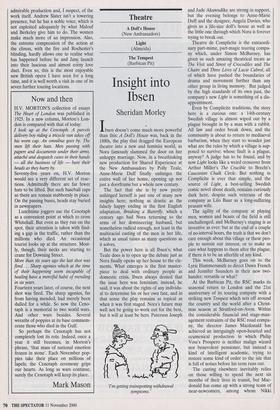Now and then
H.V. MORTON'S collection of essays The Heart of London was published in 1925. In a new column, Morton's Lon- don is compared with that of today: I look up at the Cenotaph. A parcels delivery boy riding a tricycle van takes off his worn cap. An omnibus goes by. The men lift their hats. Men passing with papers and documents under their arms, attache and despatch cases in their hands — all the business of life — bare their heads as they hurry by.
Seventy-five years on, H.V. Morton would see a very different set of reac- tions. Admittedly there are far fewer hats to be lifted. But such baseball caps as there are remain stubbornly in place. On the passing buses, heads stay buried in newspapers.
Lunchtime joggers use the Cenotaph as a convenient point at which to cross Whitehall. But even as they run on the spot, their attention is taken with find- ing a gap in the traffic, rather than the millions who died. An occasional tourist looks up at the structure. Most- ly, though, their necks are starting to crane for Downing Street.
More than six years ago the last shot was fired . . . Sharp agonies which at the time of their happening seem incapable of healing have a merciful habit of mending in six years.
Fourteen years later, of course, the next shot was fired. The sharp agonies, far from having mended, had merely been dulled for a while. So now the Ceno- taph is a memorial to two world wars.
And other wars besides. Several wreaths of poppies at its base commem- orate those who died in the Gulf.
So perhaps the Cenotaph has not completely lost its role. Indeed, once a year it still becomes, in Morton's phrase, 'that mass of national emotion frozen in stone'. Each November pop- pies take their place on millions of lapels; the Cenotaph ceremony grips our hearts. As long as wars continue, surely the Cenotaph will keep its place.
Mark Mason


























































































 Previous page
Previous page